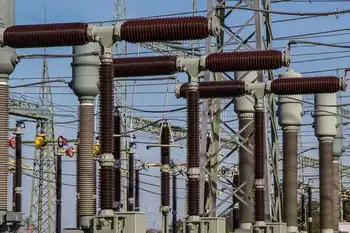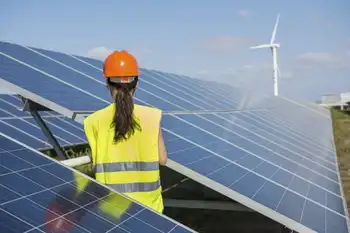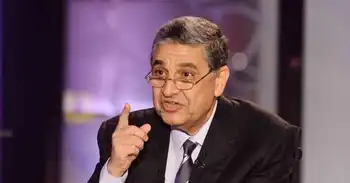PNM joins energy storage project
By Lexington Herald-Leader
Substation Relay Protection Training
Our customized live online or in‑person group training can be delivered to your staff at your location.

- Live Online
- 12 hours Instructor-led
- Group Training Available
Public Service Company of New Mexico has been awarded more than $2 million by the U.S. Department of Energy for the Prosperity Energy Storage project. It's part of the agency's effort to improve the electrical grid nationwide and make renewable energy sources more reliable.
The lack of energy storage is one of the things that has been holding back clean energy production from renewable - yet intermittent - sources like solar and wind. Without storage, the erratic output from solar panels and wind turbines can play havoc on a utility's ability to balance loads on a power grid.
Steve Willard, PNM's principal investigator for the project, said developing safe and cyber-secure storage systems will be vital for PNM and other utilities.
"If we can make renewable energy even more beneficial by having that ability to control its output through batteries, then we can really identify offsets for fossil fuel resources," Willard said.
Pressures on utilities to move away from coal-fired power plants and other means of producing electricity that result in greenhouse gas emissions have been mounting with new federal proposals aimed at cracking down on pollution and California laws prohibiting utilities from investing in most coal-fired power plants.
New Mexico also recently adopted its own cap-and-trade program and the state, along with dozens of others, have renewable energy portfolio standards that require utilities to provide a certain percentage of electricity from renewable sources. In New Mexico, the standard will reach 20 percent in the next 10 years.
Currently, about 60 percent of the electricity PNM provides to its 500,000 customers comes from coal.
Officials working on the PNM project say it's one of the largest efforts to combine solar panels and batteries for producing and storing electricity.
The battery system aims to smooth out fluctuations in power production due to cloud cover or storms as well as store power so it can be shifted to users later in the day, said Scott Kuszmaul, a researcher with Sandia National Laboratories who is working on the project.
"This is needed because without that storage, utilities like PNM cannot depend on that facility when the sun doesn't shine," he said.
Another focus of the project is analyzing how the solar array, battery system and electricity grid all communicate with one another.
Solar arrays have been operating for decades, panels have become commonplace on residential roofs, and hundreds more megawatts are scheduled to come on line in California, New Mexico and elsewhere in the coming years.
"It's all about the battery now," Kuszmaul said.
The technical feasibility and economics of energy storage still have to be proven, and that's what the Department of Energy has been trying to accomplish with the projects it has been funding, he said.
The solar panels PNM will install on the southern edge of Albuquerque will take up about eight acres and be capable of producing enough electricity for some 250 homes. The battery system will be able to store about two megawatt hours of electricity.
Desert scrub has been scrapped from the site, and construction on the solar array is expected to begin soon. The project will be operating by next summer, producing some 9 million data records each day that researchers can pore over to determine what's working and what needs to be improved.
Willard said researchers will know exactly what the system is doing on one-second intervals.
"This is a new system, and we're really paying attention to details," he said.











